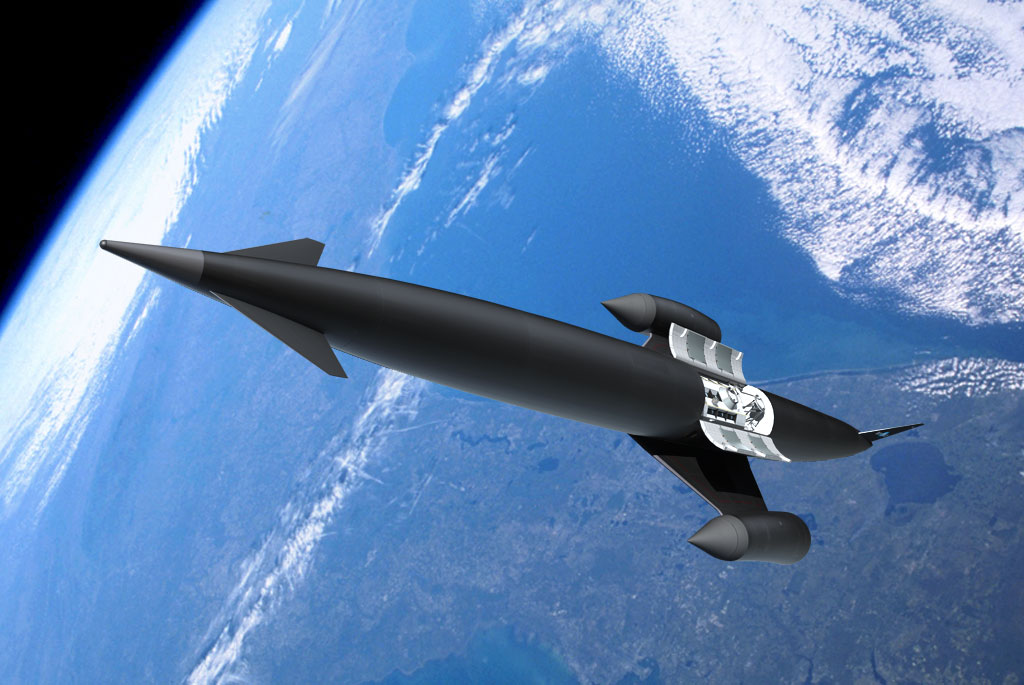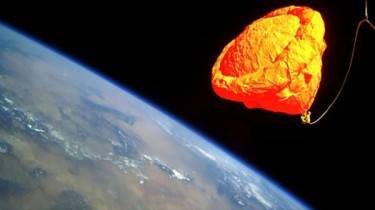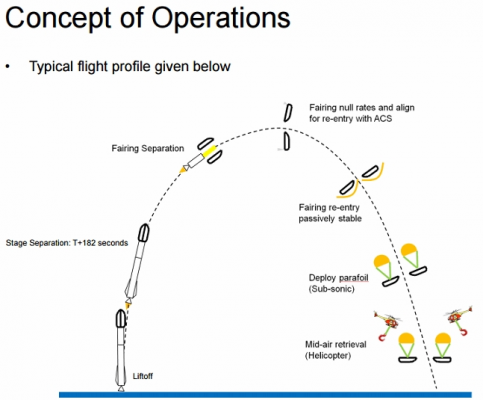The basic premise for the Airbus flyback tail section is intriguing. I saw the same animation last year, but IIRC it had no scenes of real-world prototype/model testing in it yet.
Animation of how some future rocket is going to work, is always going to be lacking details, sometimes lacking big details. When SpaceX announced they were going to reuse their rockets.... they at first attempted chutes with Falcon-1. Then much later on, Falcon-9 got landing legs, for landing vertically under thrust. But, they had no aerodynamic steering, and the first landing test into the ocean (no barge, just testing the landing up to the point of touching water ) was IIRC about 10 miles off the target due to inability of the thrusters to steer it accurately thru the atmosphere.
Then relatively VERY quickly, the Grid Fins appeared. Well, there was not very much time between that 10 mile miss and the grid fins showing up. I'm 99% sure they planned for aerodynamic steering long before then, and designed, cut metal, and built prototype grid fins before they even made that first ocean landing test. I mean, I know that designing and building nearly everything in-house they can fast-track things more quickly. But still that level of R&D, fabrication, and flight-worthy Grid Fin equipment, and modification of the rocket itself to mount and us them seemed something that would have begun a lot sooner than that 10 mile miss test. So I think that was a level of detail they planned long before that test but didn't announce IIRC till it was put onboard a Falcon for testing.
Anyway..... early video animation of the Falcon-9 with landing legs showed nothing of grid fins or any aerodynamic steering. And with Falcon-Heavy, the earliest video glossed over how the boosters separate, and even the more recent version lacks details such as mechanical and electrical disconnects.
So, as to the Airbus video lacking details on disconnecting fuel lines, well, it's a project in process, and animation showing key elements and not nitty-gritty details. But that should not be too hard, as already mentioned the Atlas did that when it jettisoned the lower shroud with two outboard engines.
Indeed imagine if the original 3-engined Atlas was still being flown.... add wings, rudderlets, and some propellers or whatever (and the power to drive them), plus landing skids, and the old-style Atlas drop-away outer engine section could in theory fly back (reuse 2 out of 3 engines). Well, OK, big nasty ugly hole where the center engine fit thru, though they could address that with a sort of split donut-shaped shroud to smooth the airflow around it and thru the center.
There will ALWAYS be a mass and therefore performance penalty for re-use. They key to is is that if you need a rocket of "X" size and mass to put 1000 pounds into LEO, to make it reusable, that rockets needs to be bigger and cost a bit more to build, let's say 110% of "X". So, then is has 10% extra performance capability, that then is available to be used for reusability rather than for 10% extra payload. THAT seems to be exactly what SpaceX has done. Although the reusability performance margin for the Falcon now is much better with the 3rd (?) generation of F9, with longer tanks, "full thrust" engines, and the Sub-cooled propellants. So for some lighter payloads it can fly back to the Cape for RTLS landings, for heavier payloads it can to ASDS barge landings that previously would have been expendable launches. And when necessary, can sacrifice the reusability to launch very heavy payloads it was not able to launch before.
Anyway, while it of course costs more to build a rocket that has 10% (or 15% or 20%) more payload capacity, and then to have that more expensive rocket "waste" a lot of that extra payload capacity for re-use, in the long run it will be a lot cheaper once the rocket does become operationally reusable and not thrown away every time.
Of course, so many companies have planned reusable rockets...remember "Roton"? Animation is easy.....and way cheaper than R&D and flight testing to actually do such massive projects as this. So is this Airbus concept Europe's answer to SpaceX's Falcon-9, or is it another high-concept go-nowhere project like the British Skylon / Hotol SSTO? Well, at least the Airbus plan seems far more realistic, not a hypothetical that's been around since the 1980's, the SSTO equivalent to the "Flying Car".

As for SpaceX, they have begun to try retrieving fairings (the fairings cost around $4 to 5 million, a big percentage of a $70 million launch). But so far it seems like they are just trying to recover what they can for study, not attempting to have them deploy chutes and such, yet. They have 1-2 ships that go out on retrieval duty, when launching payloads that use those fairings (Didn't do that for the CRS-8 launch since it didn't use those fairings. The Dragon spacecraft does have a couple of small side fairings that protect the solar panels, but those are not as expensive as the big payload fairings, and may ride a lot longer until jettison)
The payload fairings are often jettisoned shortly after staging. But it is up to the customer as to just when after that. As well, the mass of the payload affecting the velocity, the type of trajectory (lofted, not lofted), and other issues come into play as to when the relative aerodynamic pressure ("Q") would be low enough for the fairings not to be needed.
Part of a fairing washed ashore in the Bahamas last June. Story here, and one of 4 photos:
https://www.collectspace.com/ubb/Forum14/HTML/001305.html
There was a GoPro camera onboard, and here is the footage:
[video=youtube;4_sLTe6-7SE]https://www.youtube.com/watch?v=4_sLTe6-7SE[/video]
There are some..... "interesting" concepts that people are speculating on for how the fairings could survive the mild reentry (mild compared to orbital velocity). I myself wonder if a simple "Ballute" system might be able to do it, or to be a key part. Fairing halves would be hard to stabilize, but a suitable size ballute probably could stabilize the fairing, much as drogue chutes are used for, but the ballute would be inflated before re-entry. There might still be a need for deploying a larger diameter conventional chute for landing.
- George Gassaway






